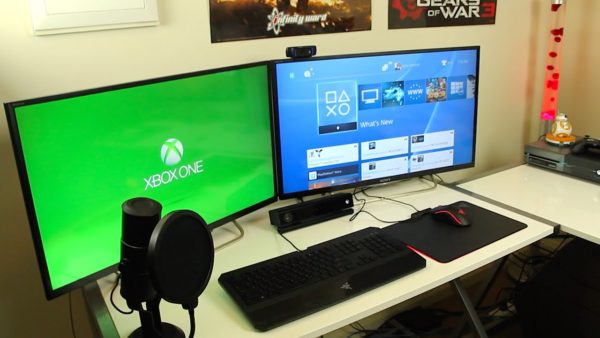Computers have been one of the most innovative, powerful, and highly versatile tools in all of modern history. With its popularization and presence, together with the help of a monitor, it is possible to obtain millions of data in a short time. These screens are output devices that reflect the information and images generated through a graphics card.
The first monitors carried out communication with their operators employing lights, until, in the 50s, it was implemented by Teletype. Since then, the general evolution has been improving significantly in a meticulous process, slow but that provided an unimaginable technological capacity at that time.
Types of monitors
- CRT monitors: They employ cathode-ray tubes to develop the transmission of information through conduits.
- VGA and SVGA monitors: These are displays that use a 15-pin VGA connector for video output.
- LCD monitors: They work through a liquid crystal, shaping light into colored or monochrome pixels. They are divided into GH, TN, VA, SNT, IPS, TFT-LCD, and DSTN.
- LED monitors: They are developed with a diode that emits intense lights and various polychromatic and monochromatic group modules that generate high definition images.
- Plasma Display (FPD): Houses size over 30 inches and uses small cell technology composed of electrically charged ionized gases.
- OLED, AMOLED, and Super AMOLED monitors: Both have an organic diode that guarantees light emission thanks to the electroluminescence layer, making them ideal for gaming. The difference is that AMOLED contains thin strips of transistors behind each pixel, which shows the better quality, and super AMOLED is a variation that includes a touch screen.
- DLP monitors: The images are generated by an optical semiconductor that, with the help of microscopic mirrors, collaborates with the light’s synchronization and sharing.
Ultrawide Vs Dual Monitor
A dual monitor consists of connecting two displays to expand the field of view with a 16: 9 aspect ratio (each). The Ultrawide monitor goes beyond the legal aspect to reach 21: 9. The configuration is more feasible in an ultra-wide one since the screen fits perfectly to the game, its handling is homogeneous and easy, without color fluctuations or inconsistencies.
When using two screens, there is the drawback of having different characteristics between them that make movement and control difficult. A solution would be to lower these factors to the most powerful screen (the advantages of this would already be wasted). The ultra-wide monitors ensure that the resolution remains stable and, thanks to its curved-type panoramic structure, makes peripheral vision more comfortable, immersive, and natural.
The use of dual composition tends to be divided into a particular function for each monitor, making it difficult to create gaming content (due to space). An alternative that can be quite complete is to use a dual composition, with one of them being ultra-wide.
Conclusion
The person’s requirements as to which monitor to use will depend on the activity you will give them. A Dual monitor is ideal for multiple tasks, while the ultra-wide one is perfect for gaming.
The search for a good monitor must be done carefully and safely, in terms of resolution, size, shape, lighting, and contrasts, among others. It involves many factors, and everything revolves around the abilities they have to meet the demands that you want to give them. The computer, in general, is armed by the knowledge and skills that one has to complement strengths and weaknesses between devices.
